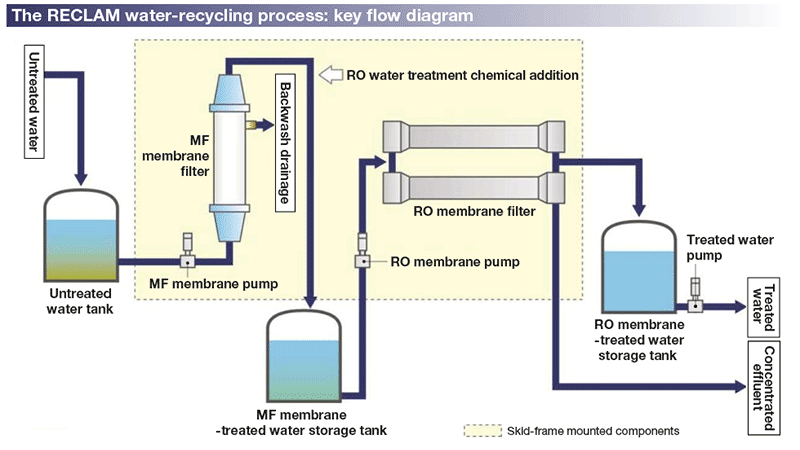Advancements and Advances in Hazardous Waste Water Therapy Technologies
The landscape of industrial wastewater treatment is undertaking a transformative change, driven by innovations that improve both effectiveness and sustainability. As governing requirements progress, the assimilation of AI and device understanding right into wastewater management systems guarantees to simplify procedures and ensure compliance.
Summary of Waste Water Treatment Technologies
Wastewater treatment innovations encompass a variety of techniques developed to eliminate impurities from industrial effluents before their launch right into the environment. These modern technologies are essential for maintaining ecological equilibrium and ensuring compliance with ecological regulations. The main classifications of wastewater therapy include physical, chemical, and organic techniques, each offering unique objectives based upon the nature of the impurities present.

Organic treatment methods employ microbes to break down raw material, making them particularly efficient for organic-rich effluents. Strategies like activated sludge and biofilm activators harness the natural degradation capacities of bacteria, resulting in substantial decreases in biochemical oxygen need (BOD)
Advanced Purification Methods
Advanced filtration methods represent a crucial advancement in the realm of commercial wastewater therapy, improving the efficiency of impurity elimination processes. Industrial Waste Water Treatment. These approaches incorporate a series of modern technologies, consisting of microfiltration, ultrafiltration, nanofiltration, and reverse osmosis, which offer consecutive obstacles for numerous particle sizes and chemical frameworks
Microfiltration and ultrafiltration make use of membrane systems to get rid of put on hold solids, germs, and larger natural molecules, enhancing the high quality of effluent prior to additional treatment. Nanofiltration bridges the gap in between ultrafiltration and turn around osmosis, efficiently eliminating organic substances and divalent ions, hence decreasing the tons on downstream processes.
Reverse osmosis uses the greatest degree of filtration by permitting just water and small particles to go through its semi-permeable membranes, making it suitable for redeeming premium water from industrial effluents. Current developments in membrane modern technology, consisting of the development of even more fouling-resistant and resilient products, have significantly boosted functional performance and decreased costs.
Integrating these innovative filtration strategies not only boosts the overall therapy process yet additionally contributes to sustainability efforts by enabling water reuse and source recuperation in commercial settings. (Industrial Waste Water Treatment)
Biological Therapy Technologies

In addition, the advancement of engineered biological systems, such as membrane layer bioreactors (MBRs), incorporates biological therapy with innovative membrane filtering. This combination permits higher effluent top quality and lowered footprint, making it appropriate for space-constrained industrial centers. Innovations in genetically engineered microorganisms have actually likewise arised, improving the biodegradation of details pollutants, such as drugs and heavy metals, that are traditionally challenging to remove.
Additionally, the application of bioaugmentation methods, where valuable microbes are introduced to enhance the existing organic therapy procedures, has actually revealed appealing lead to enhancing treatment performance. These innovations collectively represent a trend in the direction of even more lasting and effective organic treatment approaches that can adapt to the advancing intricacies of industrial wastewater streams. As sectors remain to prioritize environmental compliance, these organic innovations will certainly play a crucial role in wastewater monitoring.

Source Recuperation Methods
In industrial settings, the integration of resource recuperation approaches has actually ended up being progressively essential for enhancing sustainability and lessening waste. view it These approaches concentrate on removing useful products and power from wastewater streams, thereby changing potential contaminants right into multiple-use resources.
One famous method is vitamins and mineral recovery, where nitrogen and phosphorus, usually existing in excess in wastewater, are captured and converted into plant foods. This not only minimizes ecological effects but also provides a circular economic situation remedy for agricultural applications. Additionally, modern technologies such as anaerobic food digestion enable the conversion of organic waste into biogas, a renewable resource source that can balance out nonrenewable fuel source usage in commercial operations.
Moreover, progressed purification and membrane technologies assist in the recovery of commercial by-products such as salts and steels. These recouped products can be rehabilitated right into manufacturing procedures, reducing the demand for virgin sources.
Future Fads in Waste Water Monitoring
As sectors progressively focus on sustainability, the future of wastewater administration is readied to undertake significant transformations. Technological innovations, such as expert system and artificial intelligence, will make it possible for much more efficient surveillance and management of wastewater systems. These modern technologies can forecast maintenance demands, maximize treatment procedures, and boost decision-making, eventually minimizing this website operational expenses and environmental impact.
In addition, the assimilation of circular economic situation principles will play an essential function in wastewater monitoring. Industries are expected to change towards systems that not just deal with wastewater but additionally recover valuable resources, such as nutrients, water, and energy. This transition will lessen waste and advertise the reuse of products, straightening with international sustainability objectives.
Emerging treatment strategies, such as membrane bioreactors and progressed oxidation processes, will certainly even more enhance the effectiveness of wastewater treatment, permitting for better effluents suitable for reuse. In addition, regulatory frameworks are likely to advance, emphasizing more stringent criteria for wastewater discharge and motivating markets to take on innovative treatment services.
Conclusion
In verdict, the evolution of industrial wastewater treatment modern technologies shows a substantial shift in the direction of enhanced effectiveness and sustainability (Industrial Waste Water Treatment). Technologies in innovative filtration methods, biological treatments, and source recovery techniques highlight the market's dedication to ecological stewardship.
The landscape of commercial wastewater treatment is undergoing a transformative change, driven by advancements that improve both effectiveness and sustainability.Wastewater therapy innovations encompass a range of methods created to eliminate impurities from commercial effluents before their launch into the atmosphere.Utilizing the power of biological processes has led to substantial advancements in the treatment of industrial wastewater.Furthermore, the application of bioaugmentation methods, where valuable germs are introduced to boost the existing organic treatment procedures, has revealed promising results in enhancing treatment performance. These technologies collectively signify a pattern in the direction of more reliable and lasting organic treatment methods that can adjust to the evolving complexities of industrial wastewater streams.
Comments on “Industrial Waste Water Treatment-- Tailored Solutions for Effective Wastewater Treatment”